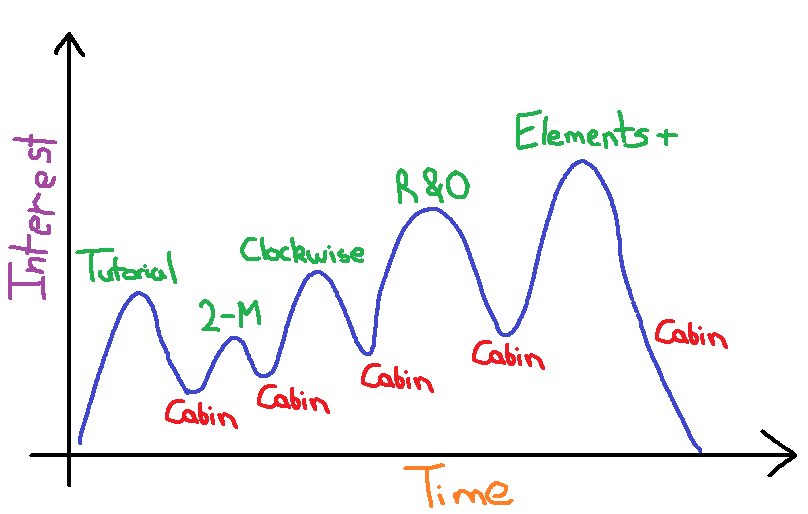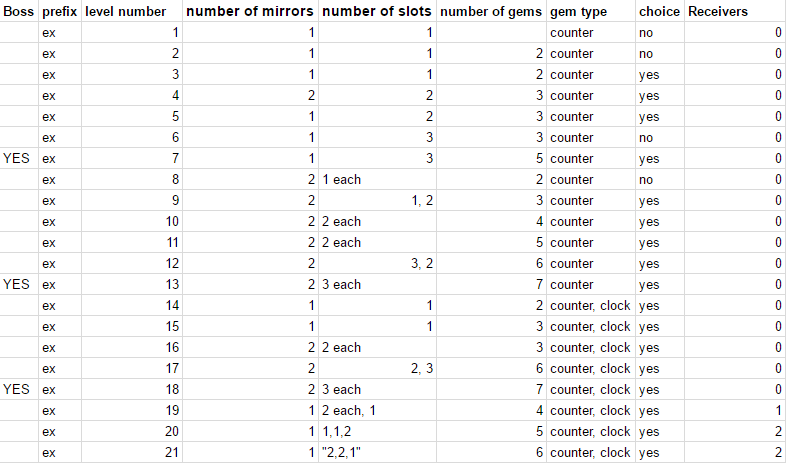Puzzles!
At the beginning of the week 9 we had our halves presentation. Following this we met Jesse Schell on Tuesday, and presented our thoughts on how we would go about designing our puzzles. His suggestion was simple.
JUST MAKE PUZZLES. Worry about the details later.
So that is what we did.

The inspiration for our puzzles came from a combination of two sources:
- The teaching material that our client used
- A map of element complexity against time
Elemental Complexity
The process of considering elemental complexity began with a consideration for the interest curve of the experience. Essentially we wanted an initial large peak then a period of rest, followed by ascending peaks with rests until a climax at the end.

When designing puzzles Level Design for Games by Phil Co suggested listing the elements of a game, and systematically designing puzzles with incrementally harder arrangements of elements.
In our case we intended to use the elements to increase complexity, but explore fundamentally the same (problems related to the 360 angle system). The elements of our game were:
- Clockwise Gem
- Anticlockwise Gem
- Beam Generator
- Power Gem
- Receivers & Obstacles
With these elements we create a table of level against elements, and incrementally increased the number of elements. When a new element was introduced we would drop other elements to lower the difficulty experience for players to more clearly grasp the new element.

Common Core
Before we had a table of level against element for level design. We began with freely creating puzzles. This process was informed by a breakdown of the exercises involved in our clients teaching material which were as follows:
- Create an angle using a protractor
- Obtuse, acute, right, and straight problems
- Visual identification of obtuse, acute, right, and straight
- Identification of obtuse, acute, right within different shapes
- Given a protractor diagram identify the angle
- Estimate an angle between two points
- Find the missing angle given a total angle
- Find supplementary angles
- Finding complementary angles
- Find missing angles in a cross shaped
- Find angles in portions of a circle
- Find the angles in a triangle
After freely creating a satisfactory number of puzzles, we used the table as a contraint guide to create more puzzles. The lower difficulty puzzles focused on presenting simple problems involving fundamental angles such as 90, 180, and 45. Whereas higher difficulty puzzles were inspired by certain shapes e.g star, parallelogram, triangle.
Conclusion
Using both these methods in tandem helped us create up to twenty two puzzles so far. We intend to create more puzzles, and using this process we hope will help to ensure creativity with constraints!